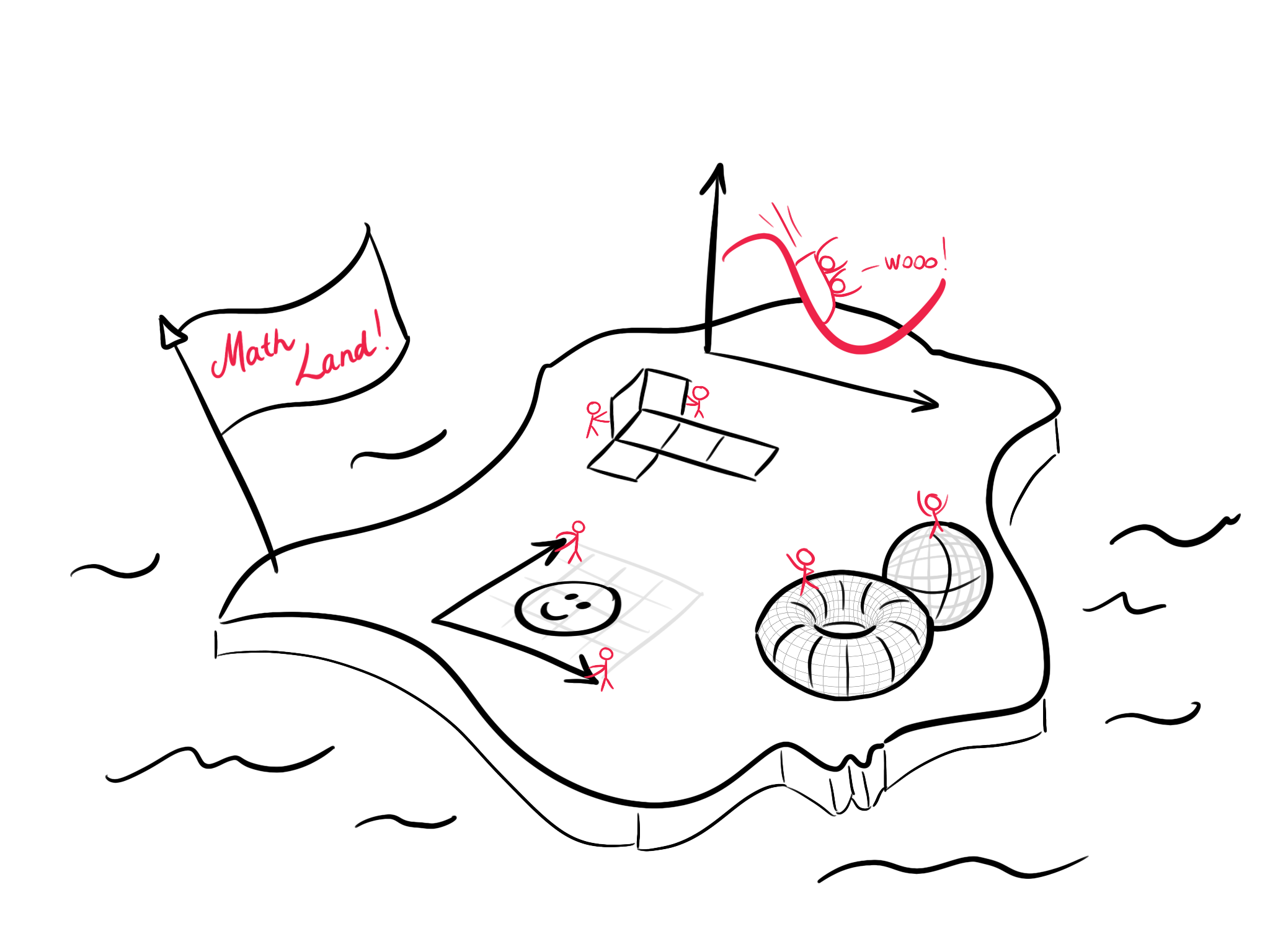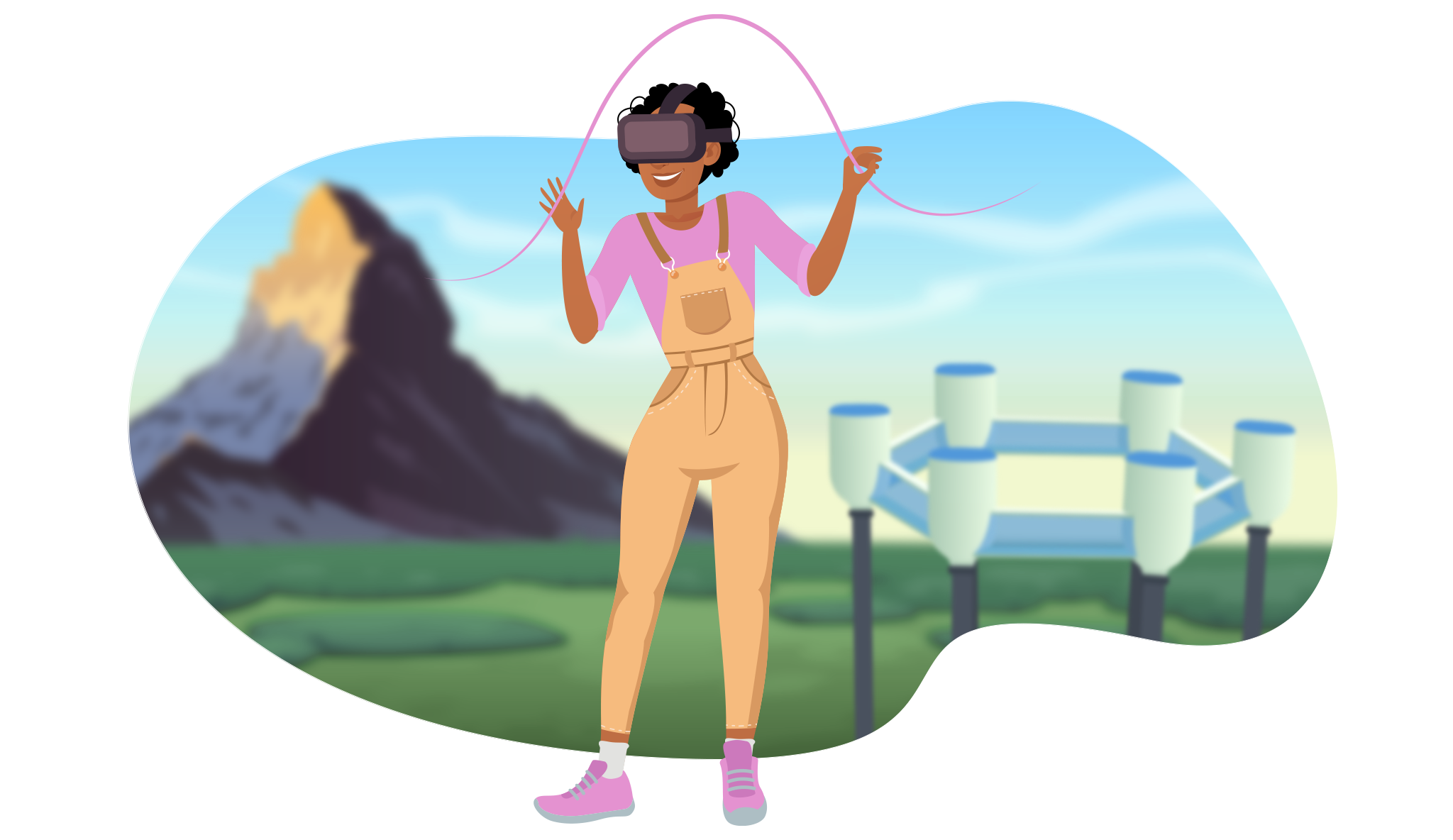Grounding Mathematics
Mar 2023Mathematics is a useful skill to learn, even for students who do not wish to become mathematicians. One of the goals of mathematics is to gain understanding of the patterns of the world, in order to model and predict future outcomes. Recent years shed light on the importance of mathematics, for example to understand and take action during the COVID-19 pandemic or the general climate crisis. However, most students find mathematics useless and disconnected from the real world, and several countries are witnessing a worrisome decline in mathematics ability. This means, we argue, that we should challenge our assumptions about how to teach mathematics, specifically as the way we teach mathematics currently does not enable students to understand it well enough to transfer their skills to other classes, nor outside of the classroom setting.
Researchers and educators tackling this issue have argued that, although mathematics is often considered as a Platonic ideal that cannot directly be sensed or manipulated, mathematics rather is a social and malleable process that arises from our sensorimotor experiences of the world. For example, arithmetic can be seen as manipulation of object collections. Similarly, the concept of infinity can be related to our way of expressing something too large for our senses to perceive, while continuity may arise from sequences of elements too small for us to sense. Simply put, mathematics is embodied, and, although not all experts agree on the implications of this theory, there is undeniable evidence that our bodies play an important role in learning mathematics. As a consequence, when designing learning activities, we need to facilitate gesture production, and support sense-making of bodily actions.
Meanwhile, Virtual Reality (VR), a technology heavily focused on bodily movement and manipulations, became more affordable and widespread. Using a wireless Head-Mounted Displays, VR can immerse learners' sensory channels into another world, digitally manufactured. Using hand-tracking technologies, VR seems particularly suitable to support embodied learning activities. With VR, we could create the MathLand imagined by Papert, a world of mathematics where learners can explore and manipulate mathematical objects. But is VR truly the solution to support the transition towards embodied learning of mathematics?

Although the idea of using VR to implement embodied learning activities seems promising, VR interaction research does not leverage actual theories of embodied learning. Specifically, we identified three main challenges in this field. First, there is a lack of empirical studies evaluating the effect of VR embodied learning activities. Second, only a handful of studies address higher education specifically. Third, there are no design guidelines for embodied learning activities in VR focusing specifically on interaction. Considering these challenges, our work addresses the following research question:
How to design embodied interaction to support embodied sense-making of mathematics?

We ground our work in three meanings of embodiment: Embodied cognition relates to the role of learners' bodies in cognition, embodied interaction relates to the role of users' bodies in interaction, and avatar embodiment relates to the perception of a digital body as one's own. Within this framework, we address these challenges through six contributions, summarized below.
Designing the digital avatar
Looking at embodied interaction at the level of the avatar, we propose “Digital Gloves”, a novel input mechanism that supports embodied interaction and reduces split-attention effect by co-locating input and display on the users' hands. Through two user studies, we demonstrate the potential of our mechanism for more intuitive, enjoyable, and effective gaming and learning experiences. We offer recommendations to best design activities using our mechanism as well as suggestions for future applications.

Designing the interaction
Focusing on the interaction level, we offer an empirical evaluation of the impact of the degree and type of embodiment on usability and learning outcomes. To do so, we designed an embodied activity to learn about derivatives. Our results reveal that although the degree of embodiment only impacts the duration of the activity, the type of embodiment impacts manipulations and learning outcomes. We offer an explanation of these results in terms of mathematical meanings highlighted by different types of embodiment, and conclude with design recommendations for VR embodied learning activities.

Designing the context of the interaction
Looking at the context of the interaction, we then conceptualize embodiment as a form of concreteness, and demonstrate the grounding affordances of embodied concreteness. To do so, we designed an embodied activity in VR to teach graph theory to bachelor students. Our activity builds on embodied metaphors by representing graphs as water flow systems. Our results show that students using our activities feel that the activity highlights the relevance of the topic best, and also feel better prepared for the subsequent lecture. Moreover, unlike an activity focusing on manipulation only, our activity does not impair transfer abilities.

Designing for individual differences in learners
As learners are at the core of the learning experience, we also explore the design space of embodied interaction for sense-making focusing on the individual differences among learners. Specifically, we explore two contexts. First, we look into an intuition-building activity where learners are directed towards specific bodily actions. Second, we look into an intuition-probing activity where learners spontaneously perform bodily actions. Specifically, we look at the role of individual differences and we aggregate the results from both studies to offer general design recommendations as well as directions for future research on sense-making embodied interaction in VR.

Supporting transition to formalisms
As our activities so far focus on intuition building, we then explore how to reconnect the embodied activities with formal representations of mathematical objects. In this project, we designed and evaluated two prototypes for input of mathematical expressions in Virtual Reality.

Defining the embodiment landscape
Finally, based on this experience, we offer an interdisciplinary framework for embodied learning and describe its relevance through several use cases. From this we draw several design considerations for VR embodied learning interactions: (1) consider the meaning highlighted by the interaction and its context and how it relates to the meaning being learned, (2) consider desirable difficulties in interaction to support deeper sense-making of bodily actions, and (3) consider breaking avatar-body morphological similarity to design semantic avatars, that is, avatars designed to apprehend a specific concept and highlight a specific meaning.

Defense video
Team
- Julia Chatain - Research, Doctoral student
- Robert W. Sumner - Computer Science Supervision
- Manu Kapur - Learning Sciences Supervision
Publications
Chatain, Julia, Venera Gashaj, Bibin Muttappillil, Robert W. Sumner, Manu Kapur. "Designing for Embodied Sense-making of Mathematics: Perspectives on Directed and Spontaneous Bodily Actions". In DIS ’24: Designing Interactive Systems Conference. (2024). (link) (pdf)
🏆 Chatain, Julia. "Embodied Interaction in Virtual Reality for Grounding Mathematics". Doctoral dissertation. Recipient of the ETH medal for outstanding dissertation. (link) (pdf)
Chatain, Julia, Manu Kapur, Robert W. Sumner. "Three Perspectives on Embodied Learning in Virtual Reality: Opportunities for Interaction Design". In CHI EA ’23: Extended Abstracts of the 2023 CHI Conference on Human Factors in Computing Systems. (2023) (link) (pdf)
Chatain, Julia, Robert W. Sumner, Manu Kapur. "Embodied interaction in virtual reality for learning mathematics." In the 20th Biennial EARLI Conference. (2023).
Chatain, Julia, Rudolf Varga, Violaine Fayolle, Manu Kapur, Robert W. Sumner. "Grounding Graph Theory in Embodied Concreteness with Virtual Reality". In TEI '23: Proceedings of the Seventeenth International Conference on Tangible, Embedded, and Embodied Interaction. (2023). (link) (pdf)
Chatain, Julia, Virginia Ramp, Venera Gashaj, Violaine Fayolle, Manu Kapur, Robert W. Sumner, Stéphane Magnenat. "Grasping Derivatives: Teaching Mathematics through Embodied Interactions using Tablets and Virtual Reality". In Interaction Design and Children (IDC’22). (2022). (link) (pdf)
Sansonetti, L., Chatain, J., Caldeira, P., Fayolle, V., Kapur, M., & Sumner, R. W. (2021). Mathematics Input for Educational Applications in Virtual Reality. In ICAT-EGVE 2021-International Conference on Artificial Reality and Telexistence and Eurographics Symposium on Virtual Environments. Eurographics Association. (link) (pdf)
Chatain, Julia, Danielle M. Sisserman, Lea Reichardt, Violaine Fayolle, Manu Kapur, Robert W. Sumner, Fabio Zünd, Amit H. Bermano. 2020. DigiGlo: Exploring the Palm as an Input and Display Mechanism through Digital Gloves. In Proceedings of the Annual Symposium on Computer-Human Interaction in Play (CHI PLAY ’20), November 2–4, 2020, Virtual Event, Canada. ACM, New York, NY, USA, 12 pages. (link) (pdf)
Related Links
Project page on the Future Learning Initiative website. (link)
Math Land is inspired by: Papert, S. A. (1990). Mindstorms: Children, computers, and powerful ideas. Basic books.
Defining the embodiment landscape. (link)
Designing the digital avatar: Digital Gloves. (link)
Designing the interaction: Grasping derivatives. (link)
Designing the context of the interaction: Grounding graph theory in embodied concreteness. (link)
Designing for individual differences in learners: Perspectives on directed and spontaneous bodily actions (link)